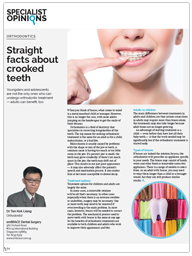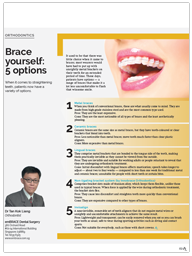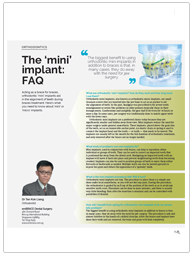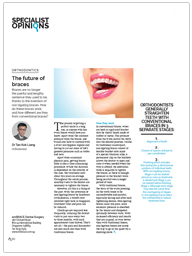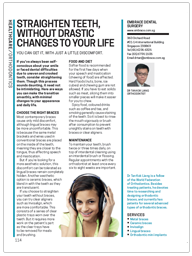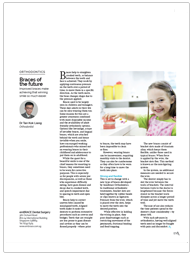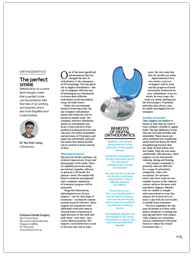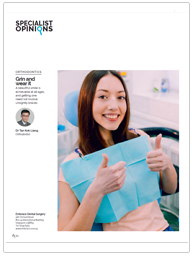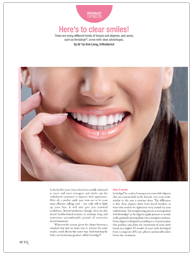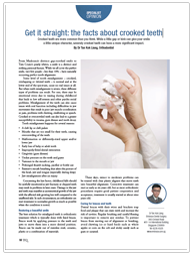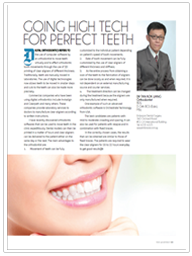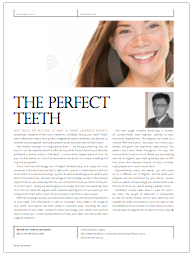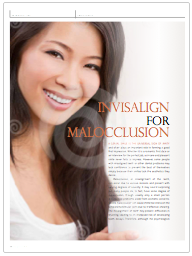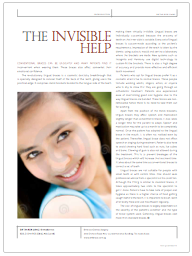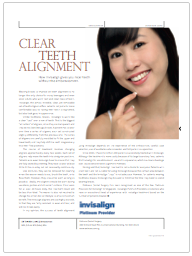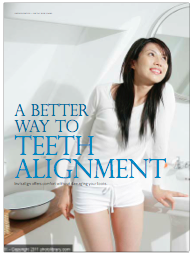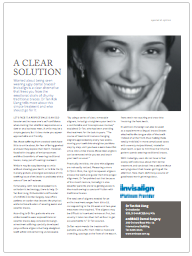A Genial Smile is the Universal Sign of Amity
A general smile is the universal sign of amity and often plays an important role in forming a good first impression. Whether it is a romantic first date or an interview for the perfect job, a sincere and pleasant smile never fails to impress. However, some people with misaligned teeth or other dental problems may lack confidence to present the best of themselves simply because their smiles lack the aesthetics they desire.
Malocclusion, or misalignment of the teeth, can occur due to various reasons and present with varying degrees of severity. It may sound surprising but many people do, in fact, have some degree of malocclusion, though usually only a small portion will develop problems aside from cosmetic concerns. Severe malocclusion can cause immense stress on the temporomandibular joint due to ineffective chewing. The misalignment of teeth may present difficulties in brushing, leading to an increased risk of developing tooth decays. Therefore, although the psychological stress experienced by most patients with malocclusion is an important concern to clinicians, it should not be looked at as a purely cosmetic issue without regard to the possible complications that may develop.
For many years, traditional metal-and-wire braces have been the primary means of treating orthodontic patients with malocclusion. However, these braces have the downside of being aesthetically unappealing, adding to the psychological stress faced by patients with already low self-confidence.
The Invisalign aligners are a type of virtually invisible, removable and customisable braces which tend to appeal to the younger, more aestheticsconscious group of patients. Patients with a range of orthodontic complaints, despite not having severe malocclusion, can consider using the Invisalign technology which offers a range of benefits over traditional metal-and-wire braces for teeth straightening. The main benefit of Invisalign is the aesthetics. Being made of clear plastic, the braces are not visible by others after being put on. Its being removable also means that the patient is able to eat, brush and floss without hindrance. Furthermore, having no metal parts makes it much more comfortable for the patient compared to traditional braces with metal wires which often cause irritation to the delicate mucosa of the mouth.
Teeth straightening with Invisalign involves a visit to an orthodontist who will examine and investigate the type and degree of malocclusion. The visit is usually fuss-free, requiring no special preparation on the patient’s part. Dental impressions, x-rays and photographs of the teeth will be taken and processed digitally using a specialised computer software which will generate a three-dimensional model of the patient’s set of teeth. The model will then be analysed and adjusted as prescribed by the orthodontist and a computer simulation of treatment progress from start till end will be sent to the orthodontist for review and approval. Upon approval, an individualised set of Invisalign braces will be manufactured for each of the treatment stages.
Because of the use of advanced computer software simulation in Invisalign treatment, patients and their orthodontists are able to have a clearer picture of the predicted treatment process and outcome. This offers the benefit of better predictability over the traditional metal braces. Moreover, some types of malocclusion are particularly suited for Invisalign because the treatment duration has been observed to be shorter and less likely to result in mid-treatment problems such as breakages of brackets and archwires (as shown in the pictures above).
Patients who wish to use Invisalign for teeth straightening should first discuss with an orthodontist to find out if they are suitable. Although the treatment is generally safe and has been shown to be effective in patients with many different types of orthodontic complaints, some patients are found to benefit less from this form of treatment and are thus not recommended. As an example, patients with short crowns will not be suitable for Invisalign because the contact surfaces between teeth and plastic aligners will be reduced and the movement of teeth will end up inefficient. Since the cost of Invisalign braces is significantly higher than traditional metal-and-wire braces, the cost and benefits actually do not match up for this group of patients. Additionally, patients who are unable to comply with instructions to wear the aligners for at least 20 hours a day will also not be able to benefit from treatment. In worst cases of poor compliance after treatment has started, the teeth may get even more misaligned than before. Therefore, the patient’s understanding of treatment and compliance to instructions are essential before this treatment can be recommended.

